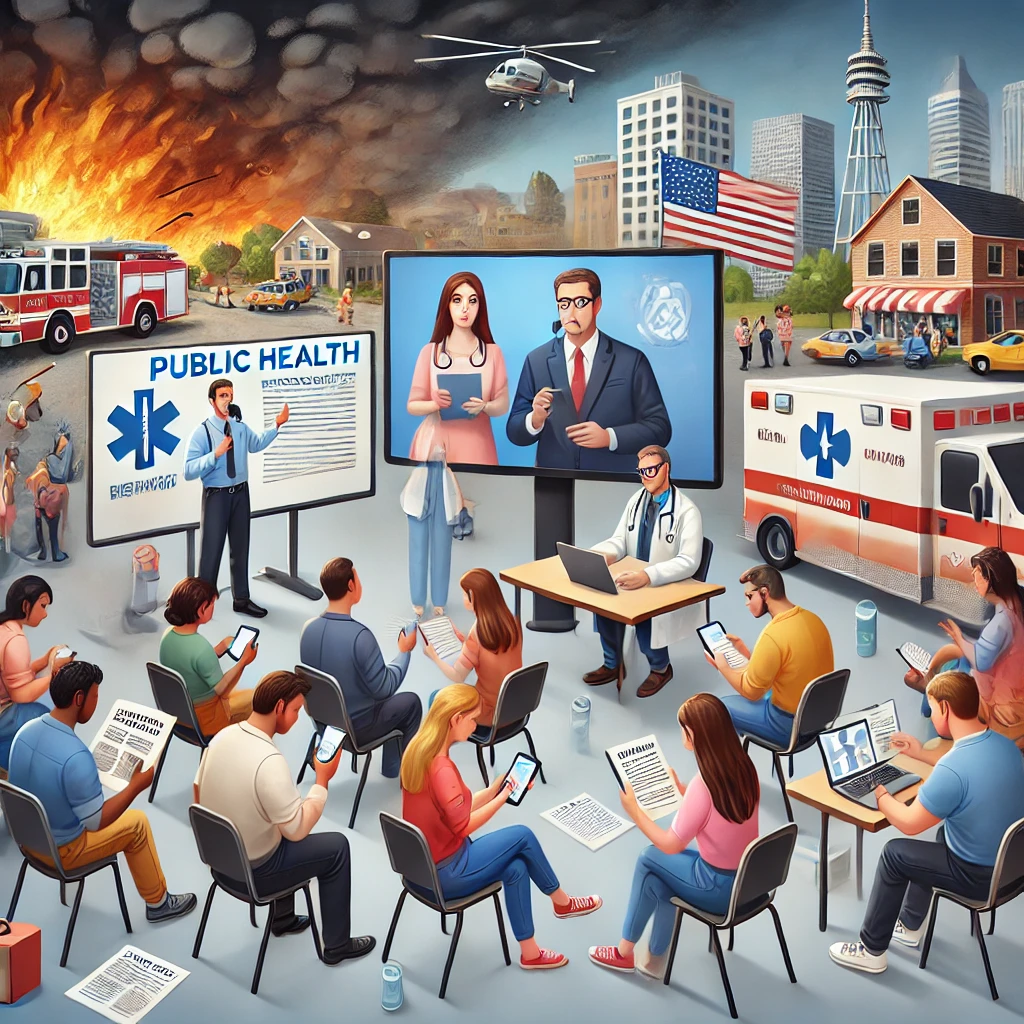AIMM Model: Comprehensive Strategies for Effective Public Health Communication During Disasters
The study reviews factors that enhance the effectiveness of public health messaging during disasters, highlighting the importance of tailoring messages to specific audiences, balancing information quality and quantity, and using credible messengers and appropriate delivery modes. The AIMM model guides optimal public health communication for better disaster response and risk reduction.

A study by the Institute of Health and Wellbeing, Nursing, Federation University Australia, examines how public health messages can be made more effective during disasters. Public health messages are crucial because they provide guidance on how to prevent risks and reduce harm during emergencies. The goal of this review is to understand how these messages are currently delivered and identify factors that make them more effective.
Tailoring Messages to the Audience
The study used a method called a scoping review, which is a way to look at a wide range of studies on a topic. This method helps to see what research has been done and what is still needed. The review looked at studies from the past 20 years that covered various types of disasters around the world. Seventeen sources were included in the review, and the findings were put together into a model called the AIMM Public Health Messaging Scale. This model stands for Audience, Information, Messenger, and Mode, highlighting the key factors that influence the effectiveness of public health messages.
One major factor is the audience. It's important to tailor public health messages to the specific group of people they are meant for. Different groups have different languages, literacy levels, and cultural or religious contexts. By understanding these differences, messages can be made more relevant and easier to understand. For example, using local languages and considering cultural practices can help ensure that the message is received and understood correctly.
Balancing Information Quantity and Quality
Another important factor is the information itself. The amount and quality of information must be balanced. Too much information can overwhelm people, while too little can lead to complacency or a lack of concern. The information should be clear, timely, and relevant to the specific situation. It's also important to avoid causing unnecessary fear or panic. For instance, during the COVID-19 pandemic, too much conflicting information led to confusion and anxiety. Clear, straightforward messages help people know what to do and why it's important.
Choosing the Right Messenger and Mode
The messenger and the mode of delivery are also crucial. People are more likely to trust messages from health experts and trusted community leaders rather than politicians or the media. The mode of delivery should be chosen based on what works best for the audience. Traditional media like television and radio can reach a wide audience, but social media and word of mouth are also important, especially for younger people and specific community groups. The review found that using a combination of different methods often works best.
Improving Public Health Messaging for Better Outcomes
The review's findings show that public health messages can be effective in changing behavior during disasters if they are carefully crafted and delivered. The AIMM model helps to explain what needs to be considered for messages to have the best impact. Messages should be planned with the audience's needs and preferences in mind, using the right amount and type of information, delivered by credible messengers through appropriate channels.
The study also points out some limitations. For example, the search terms used might not have captured all relevant research. Some studies might discuss public health messaging but not be included because they didn't focus specifically on disasters. Despite these limitations, the review provides valuable insights into how to improve public health messaging during emergencies.
Effective public health messaging during disasters is essential for guiding people on how to protect themselves and reduce risks. Messages need to be clear, credible, and relevant to the audience's needs. By understanding and addressing the factors that influence how messages are received and acted upon, public health officials can improve the way they communicate during emergencies. This, in turn, can help save lives and reduce the impact of disasters on communities.
- FIRST PUBLISHED IN:
- Devdiscourse
ALSO READ
India Battles Dual Disasters: Heatwaves and Floods Rock the Nation
Global Headlines: Political Shifts and Natural Disasters Shape Today's News
UNHCR Warns of Intensifying Climate Disasters Worsening Refugee Crises, Calls for Action and Funding
Biden vs. Trump: Drama, Disqualifications, and Debate Disasters
Nepal Hit by Devastating Monsoon Disasters










